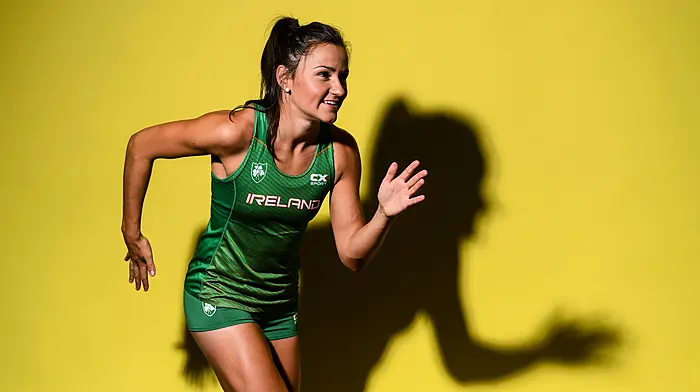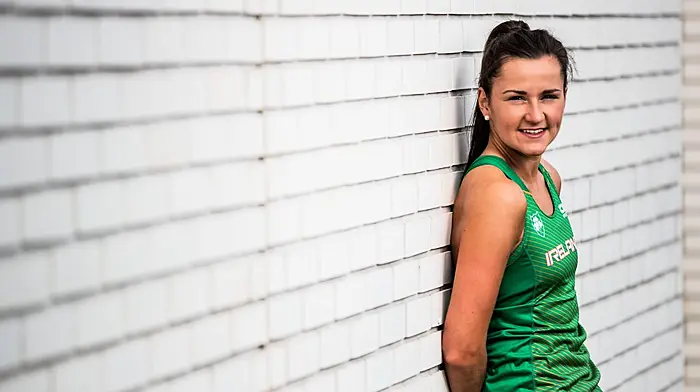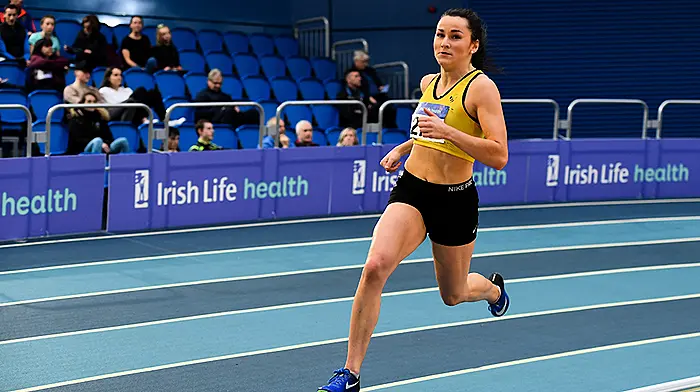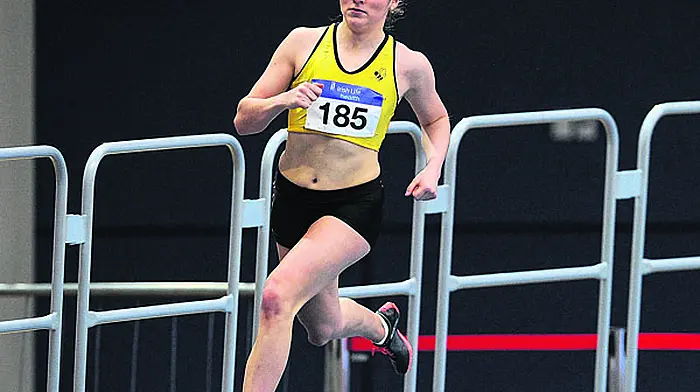IF she stays injury free, expect Phil Healy to break her own national records this year – that’s the prediction from her coach Shane McCormack.
Potentially, this is the biggest year of the 25-year-old’s life, as the Tokyo Olympics in the summer move closer. Healy is determined to become an Olympian, and fast times will help her realise that dream of competing in the women’s 200m at the Games.
‘There are two ways into Tokyo. You either run the qualifying time or you have a very good ranking position which is basically be in the top 56 in the world,’ Shane McCormack said.
‘22.80 is the qualifying standard, Phil opened up last year with 23.04, her national record is 22.99, she’s already ran 23.2 indoors this year, she will be close enough to that time, but the safety net is the rankings.’
Healy is currently inside the top 56 and McCormack hopes she’ll be around the 30 mark by June, so well within the qualifying standard.
There is always the chance that she will run the 200m qualifying standard of 22.80, which would be a PB and national record. To achieve that, she needs to take a sizeable chunk off her current national record of 22.99, and both Healy and McCormack are confident that’s within her grasp.
‘100 percent, she can go faster,’ McCormack said. ‘Phil is only 25 years old, she’s nowhere near her peak, she is probably only coming into her peak years now.
‘Last year was a setback (she broke her foot in April 2019), she had opened up with 23.04 and I think she would have gone on to run a 22.8 or a 22.7. She got offered lanes in Diamond Leagues but she broke her foot so she couldn’t run those races. The signs are there.’
Healy has said herself that she felt a 22.80 was realistic last year, but breaking her foot on a training camp in Malta upset the rest of the season. Winter training went well, though. In her season opener in Athlone at the end of January, Healy won the indoor 200m in 23.28 seconds, the third fastest time ever by an Irish woman, and only 0.11 of a second off the Irish record of 23.17. That’s an encouraging start, followed up by more quick times in Vienna recently when she clocked 52.65 in the 400m, her third fastest indoor time ever, and she also ran 23.46 in the 200m, the two races within two hours of each other.
‘We knew halfway through the winter that the form was back after the injury she sustained early in the summer last year,’ McCormack said.
‘It was a tough summer, she ran exceptionally well considering she broke her foot. Doha for the World Championships was probably a bridge too far, physically-wise and mentally-wise, but once she took a break, a lot of the hard work we put in during the summer started to shine through in October and November.
‘We knew we were in a very good place based on the times she was running in training and things that were happening in the gym with her strength.’
The signs hint at a big year ahead for the Ballineen woman, who will flip between 200m and 400m this season, as she works towards qualifying for the Olympics in the 200m.
‘I always find that you need to be able to run well above the distance to be good at the distance that you want to be good at. If you want to be a good 100m runner, you need to be a good 200m runner. If you want to be a good 200m runner, you need to be at least a half decent 400m runner,’ McCormack explained.










